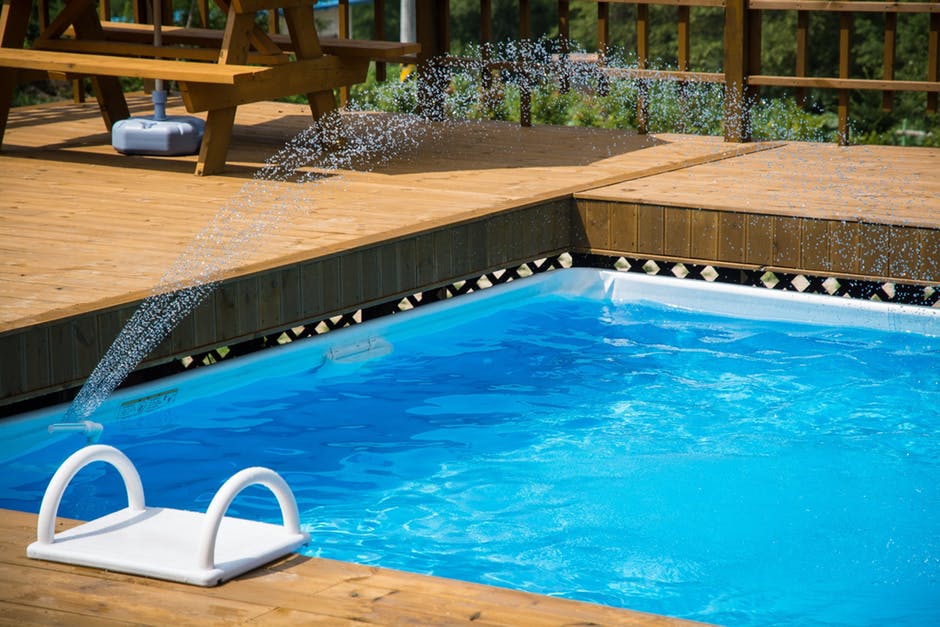There are 10.4 million residential swimming pools in the United States. A backyard swimming pool is a luxury that many Americans cherish during hot, sunny days.
But having crystalline waters doesn’t just happen on its own. Read on to learn everything you need to know about how to maintain clear pool water in your swimming pool.
Test the Water with a Pool Water Test Kit
The secret to crystal clear pool water is frequent testing and balancing.
You should test your pool water regularly for best maintenance results.
A pool water test kit will test the free available chlorine, the total chlorine, the pH level, the calcium hardness, and the total alkalinity.
All of these factors work together to make your pool water inviting and enjoyable. Cloudy or green pool water is caused by some kind of imbalance of these ratios.
You should test the pH levels every other day. Aim for a pH level of 7.2–7.6 parts per million (ppm).
Test the total alkalinity every month so long as the pH levels are in the right range.
For plaster pools, the ideal total alkalinity range is 80–120 parts per million (ppm). For vinyl, painted or fiberglass pools, the ideal range is 125–150 ppm.
Depending on what your pool water test kit reveals, you will need either an alkalinity booster, a pH product that will either boost or lower the pH range to the right range.
Select the Type of Chlorine You’ll Use
One of the main differences between a saltwater pool and a traditional pool is the use of chlorine.
You’ll need to use chlorine to kill bacteria and algae in your swimming pool water if you don’t have a saltwater pool.
Chlorine is available in tablets, sticks, granules or liquid. The active ingredient is the same regardless of the form.
The only differences are the concentration levels of the active ingredients as well as the way the chlorine dissolves.
Some types of chlorine dissolve slowly and so need less pool maintenance.
Once you know the kind of chlorine you’d like to use, you need to decide how to deliver it to your swimming pool.
You can use a floating chlorine feeder or an automatic chemical feeder. Automatic feeders require little effort. With them, you can control the amount of chlorine added to the pool at any time.
With these feeders, you might not need to adjust your chlorine level until the next week.
Shock the Pool Water Weekly
Combined chlorine happens when the chlorine you put in your pool binds with other chemicals in the water. For example nitrogen or ammonia.
When it binds to another chemical, the chlorine is no longer effectively doing its job. Worse still, this is when it can sting and irritate the eyes and skin of your pool users.
You can combat combined chlorine through a weekly shock treatment.
Ensure Good Circulation of Pool Water
You know that stagnant water, whether in a lake, pond or pool is unhealthy and not safe for swimming.
Green pool water is a sign of algae. If algae can grow that means that you don’t have enough circulation in your swimming pool water.
Moving water is vital for healthy clear, swimming pool water. Keep your pump and filter system running daily to keep circulation flowing well.
You can’t run your pool pump too often. But as that can get expensive, you should aim for at least 10 hours a day when you run your filter.
Clean Your Pool Thoroughly
It’s not enough to treat the water inside your swimming pool. You must also clean the insides of the pool.
You’ll need a net, a pool brush, and a pool vacuum to keep your swimming pool in crystal clear condition.
You should brush, skim and vacuum your pool at least once a week. This routine keeps buildup from accumulating on the walls and floor of your pool.
You may need to use a brush and some elbow grease to clean tough spots on tile or the liner.
Even if you own an automatic pool cleaner, you’ll still need to skim and brush the pool regularly. Though having an automatic pool cleaner makes it easier and faster to clean your pool.
Backwash Filters
To avoid cloudy pool water, you must frequently backwash your filters.
Backwashing means reversing the flow of water through the filters. This process pushes out dirty water and tiny contaminants out of your swimming pool.
Create a Maintenance Schedule
One of the most important ways that you can be sure to maintain a sparkling pool is to create a schedule and keep it visible.
This allows you to keep organized and on track for your important pool maintenance tasks.
Pin your schedule to the fridge or in the pool shed where you’ll see it most often. You can include tasks such as what to do to close your pool in your schedule.
If you have others enjoying the pool, why not assign them each a task to divide the work? If you divvy up the tasks, everyone will be able to spend more time in the pool and less time cleaning it.
If you are away from home for a few days, the schedule will ensure that the right tasks get done to keep your pool looking great.
Final Thoughts
Thanks for reading. We hope this guide on how to maintain crystal clear pool water is helpful.
Though the process of maintaining a pool can be daunting at first, you will soon get the hang of it.




